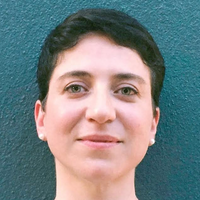On learning to trust yourself
Prelude
Born in Fritzlar, Germany, Malte Fritzlar is a painter and visual artist living and working in Berlin. He studied fine arts at the school of arts Berlin Weißensee in the class of Antje Majewski and Hanns Schimansky.
Conversation
On learning to trust yourself
Painter Malte Fritzlar discusses how identifying as an artist was a refuge for him even as a child and how the medium helps him question his identity.
As told to Grashina Gabelmann, 1604 words.
Tags: Art, Beginnings, Identity, Education.
Tell me one of your first memories connected to drawing or art.
It’s one of those things where I’m not sure if it’s a real memory or a memory I think I have because I’ve seen a photo of it. I’m two or three years old, in my room, standing at my small table and the photo is taken from behind. I’ve got two stacks of paper next to me. One stack of paper is blank and the other stack is composed of papers that each have a circle with two dots drawn on them. I’m drawing these very simple faces in quick succession.
What does that photograph make you feel now?
I knew that I always did draw and that I got a lot of recognition for my drawings. Seeing the process of drawing a face quickly, then taking another paper, drawing the same again and again is fascinating because I always wonder where this curiosity in drawing people comes from. That was a very interesting moment for me, a kind of enlightening moment because I could see the connection very clearly. What does it mean to draw a face? Why are humans so interested in that? And, why am I so interested in that?
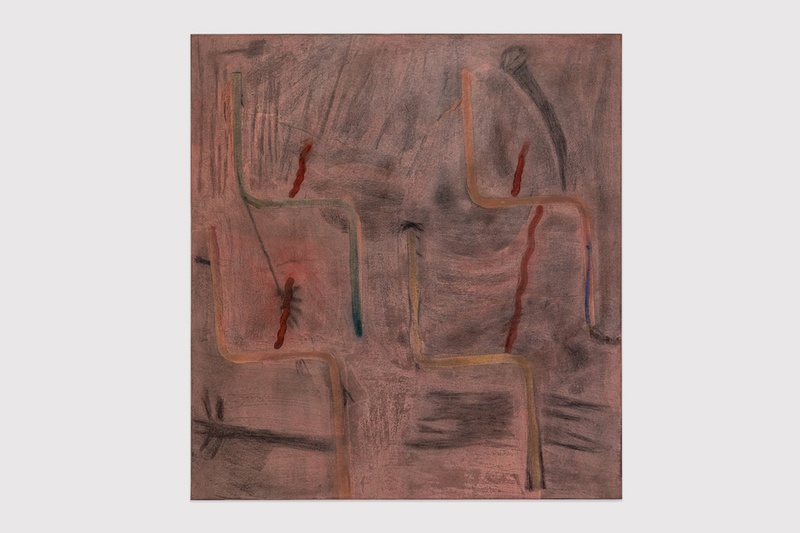
HARTE WINKEL, ACRYLIC AND CHARCOAL ON CANVAS, 2021.
Knowing you were already into drawing faces as a child proves that the interest isn’t purely intellectual because it was always inside of you.
Yes, exactly.
Can you explain this to yourself?
I was talking to my mother about this picture. She was a kindergarten teacher. She taught me that the face is very, very important to every kid because it’s the first thing it sees when it comes into the world. The mother’s face is especially important for the kid as is its ability to read the mother’s facial expression for its survival. Reading faces is existential and why we are drawn to them.
And a baby also uses its face to ignite love from the mother.
Yes, exactly.
A child learns which of its facial expressions gets the desired reaction and thus learns about its surroundings. Perhaps painting was your technique to try and understand your world?
I think so.
A way to decode.
Yeah, exactly. I think it’s a starting point: you start with the face of the mother, and from there on you go deeper into the rest of the world.
There’s something so interesting drawing the same face again and again as you were like you were almost reproducing yourself.
Yeah, or trying to get closer to it with every drawing. Perhaps I thought that I could reach the realness of a face with each drawing I made. This notion of getting closer and closer to it could also be a metaphor for my search. What are we? What’s the purpose of everything? What’s our identity? What’s my identity?
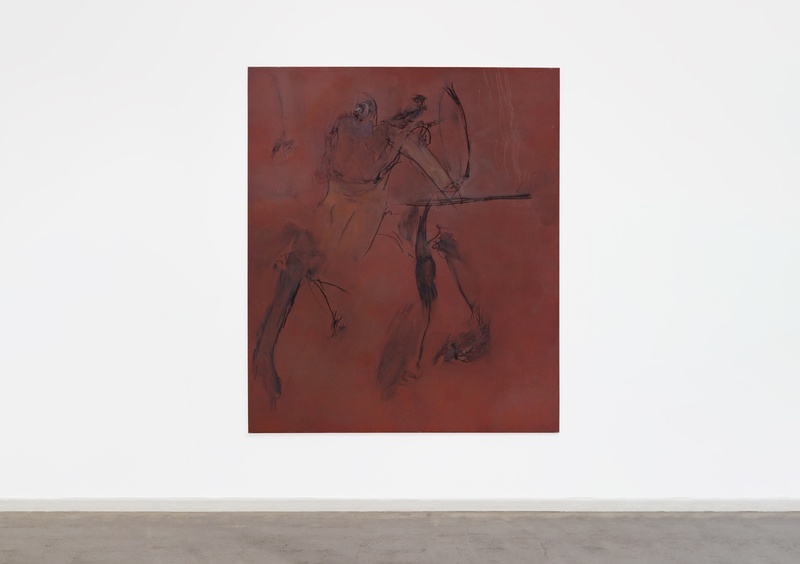
DIE TAUBEN VOM WITTENBERGPLATZ, ACRYLIC OIL AND CHARCOAL ON CANVAS, 2013
When you were a little bit older did you use your skills as a painter to explore identity?
I lost a little bit of interest in drawing as a teenager because there were so many other things going on but I always knew that I would come back painting. My parents were really into art and my mother would send me to workshops and courses. That’s where I met an older artist who became my mentor. He pushed me, took me to exhibitions, and gave me insights into art.
How did you decide to study art and become an artist?
I remember being in the car with my grandparents when I was around nine and them asking me what I want to do when I grow up and answering, “I want to be an artist.” That’s a bit strange because, at this time, I didn’t know what it meant to be an artist. But somehow I must have gotten a sense of what the world of art is about or the freedom that can come with identifying as an artist.
What do you associate with the identity of being an artist?
I mean, at this time, sitting in my grandparent’s car, I didn’t know what it meant, but I must have had a feeling that the art world offers many possibilities and openness. I had quite a lot of issues at school. I got bullied and discriminated against being myself, for being imaginative and creative. I was very sensitive and was also very sensitive to critique. I cried a lot at school when I was critiqued and didn’t understand what I was being critiqued for but knew that it was something bad. Somehow I knew that what I was being judged for at school would be seen as gifts in the context of creativity.
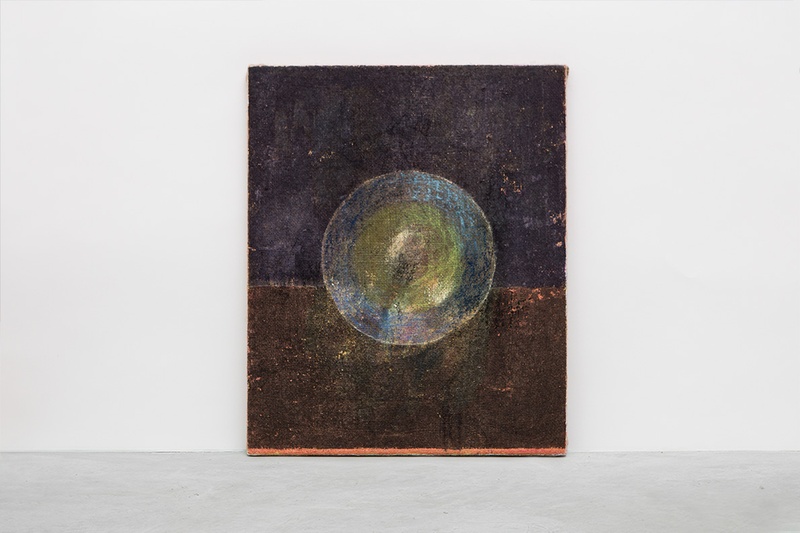
THE LOOK, ACRYLIC AND PASTEL ON CANVAS, 2016
You knew you needed to find a space where you could thrive being yourself. Taking on the identity of the artist was a sort of refuge for you. Would you say that art, beyond being a thing to identify with, is also a tool for you to explore questions of identity?
Yeah, I think it’s a safe place, and because it’s so safe, I can let myself go and float. It’s as much a safe space as it is a source. You can fall into it, feel into it and explore all questions of identity.
Do you remember first exploring your identity through painting?
I remember being in the studio of my mentor, listening to the conversations he had with other artists, leafing through his collection of art books. I discovered artists who felt close to me, who were exploring their identities and expressing themselves. It made me develop my artistic language.
Can you describe this language or is it impossible to put it into words?
It’s not easy. It encompasses a lot of existential questions like what is one’s place in the world? Why do we exist? It sounds a bit cliche if I say it like that but, I think it’s all about feelings, and questioning their origins and their impact on oneself and others. My homosexuality is also an important factor as I started to question my sexual identity as a teenager once I understood the difference between my sexuality and most other people’s sexuality. Perhaps being gay led me to question myself a little bit more than others around me.
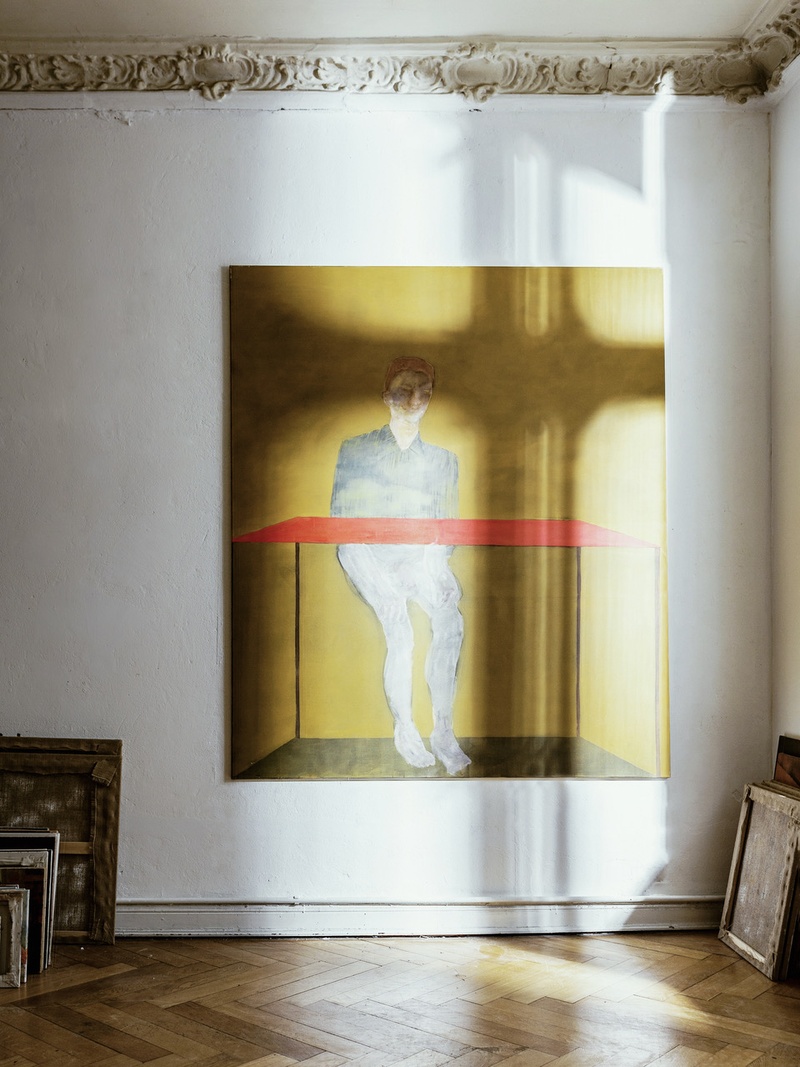
Untitled, ACRYLIC AND CHARCOAL ON CANVAS, 2013
You stopped painting for a few years. Were you questioning your decision to be a painter at this time?
My momentary break with painting came through studying art I believe. The studies are important because you get a certificate that gives you permission to paint and call yourself an artist.
You’re officially being given a space to explore yourself.
Yes and that was very important to me, but of course, you get critiqued a lot at art school and that’s a good thing but it can also be stifling. There was a professor who said of my work, “Yeah, I mean, technically, that’s all fine, but now you need to consider what it’s all about.” I got so deep into thinking about my work, my head got heavy and I felt stuck. I lost my motivation to paint. It was shortly before graduating and I completely stopped going to school for a year. At some point, the urge to paint returned and I felt I wanted to paint my way without caring about explaining the meaning to others. I did this for a while and then showed my work to the same professor who then said, “Wow, that’s amazing.” And, I said, “Well, okay, but I didn’t think about it as you told me to.” But she wouldn’t have it and began to tell me what my art was about. It was an important moment because I understood that I shouldn’t care too much about other opinions. But of course, I was quite young and unstable, and very confused about my identity.
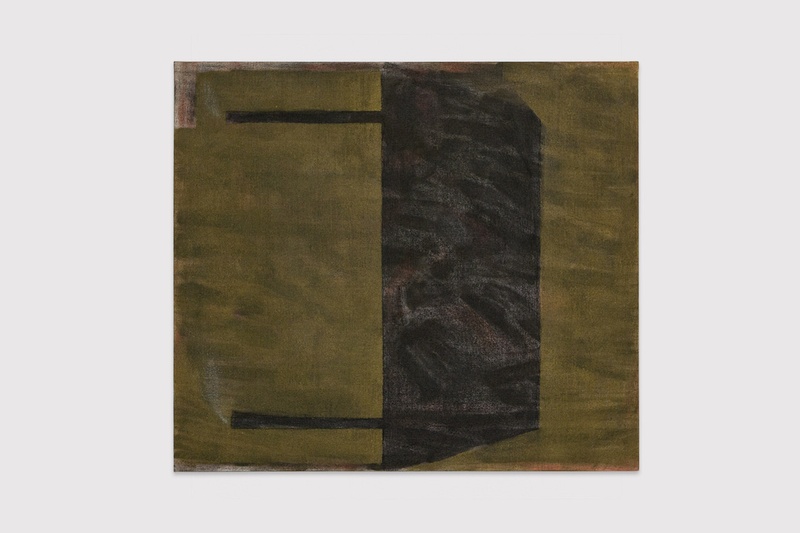
BARRIKADE, ACRYLIC PASTEL AND CHARCOAL ON CANVAS, 2021
What relationship do you currently have to being a painter?
I think I’m now at the point where I’m able to create because I worked through things. Melancholy can be fruitful but you need to have a certain understanding of yourself, a certain stability to be free in making art. If I look at the paintings I did during my studies, I see that they aren’t playful and that’s okay because they reflect the state I was in but now I can let myself fall into my art more and explore different shapes and nuances without being too judgmental.
You can let things happen because you’ve learned to trust yourself?
I think that’s a really good way to describe it because if you trust yourself, anything that happens can become a super interesting asset to your process.
Malte Fritzlar Recommends:
John Berger, Ways of Seeing
Alan Downs, The Velvet Rage
The exhibition catalogue, Emotions & Relations, published by Taschen
Roland Barthes’ La Chambre Claire
Jonathan Littell, Triptych: Three Studies After Francis Bacon
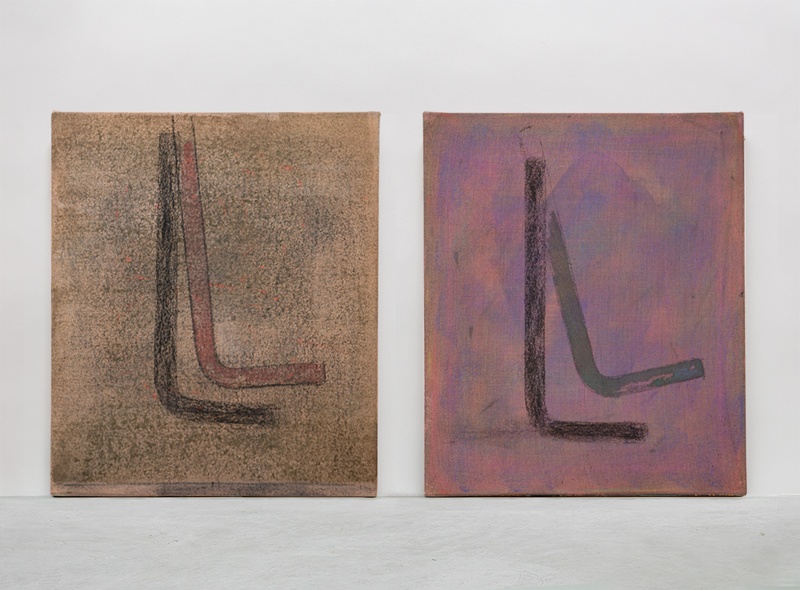
AUF JETZT, KOMM! (1+2) ACRYLIC AND CHARCOAL ON CANVAS, 2021.
- Name
- Malte Fritzlar
- Vocation
- Painter
Some Things
Pagination

